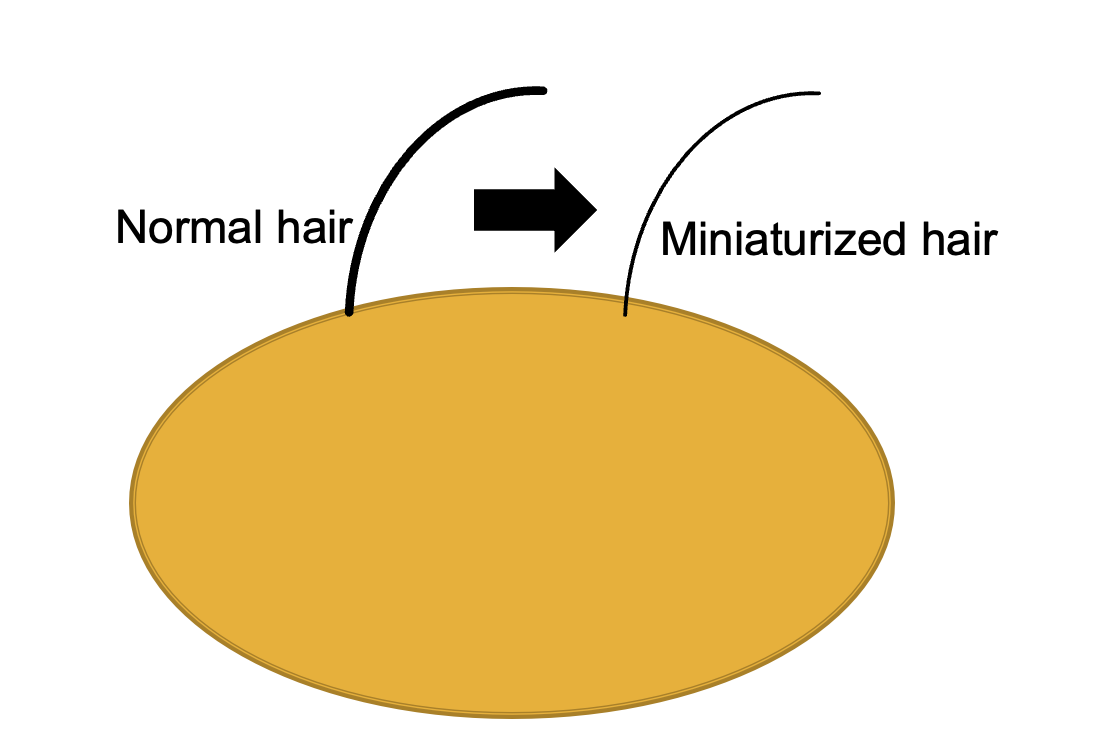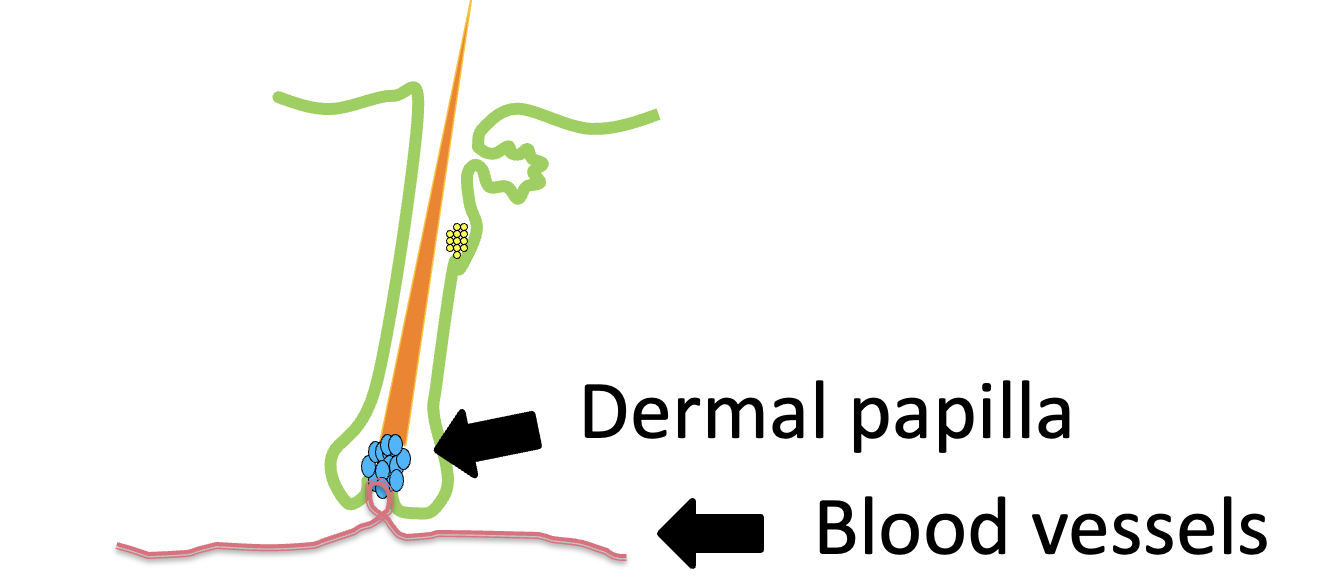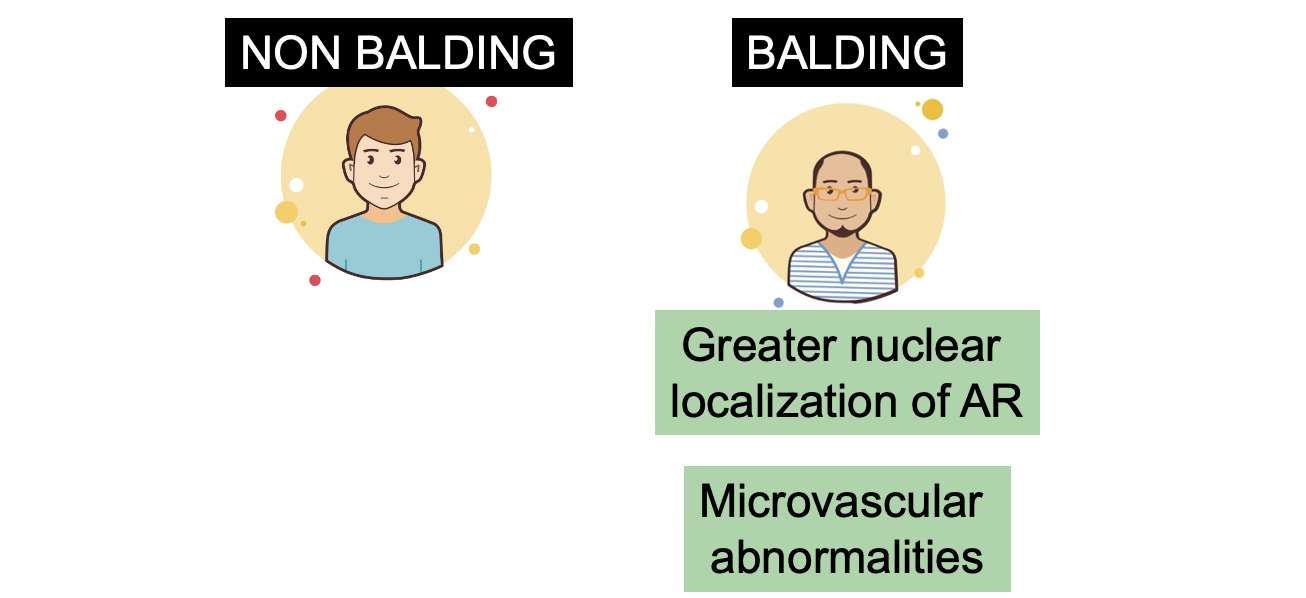Early Disappearance of Dermal Papilla Blood Vessels in AGA.
Blood Vessel Regression in Balding Scalps Correlates with Miniaturization
A new study published in the Journal of Investigative Dermatology puts abnormalities in blood vessels at the center of attention in androgenetic alopecia.
Androgenetic alopecia, which affects 80 % of males in their life time and 40% of females is characterized the the progressive thinning of hairs. This is known as miniaturization.
The process of miniaturization is controlled by a number of factors, some of which haven’t been fully worked out. It’s clear that the dermal papilla at the base of the hair follicle is the master control center of the hair loss. During the course of androgenetic alopecia, the dermal papilla gets smaller and smaller in size and this correlates with thinner and thinner hairs that get produced.
Blood vessels are quite rich in the skin and quite rich around the dermal papillae. They bring in nutrients and help the skin and hair thrive.
A new study by Deng and colleagues set out to explore differences between balding and non balding scalps. The authors found that balding scalps had greater androgen receptor expression in dermal papilla and a greater proportion of the androgen receptors were located in the nucleus .
Blood Vessels Regress at Early Stage in Course of AGA
The researchers showed that blood vessels regress in the dermal papillae of balding scalps at the early stage of hair follicle miniaturization in AGA development. Once the hairs begin to miniaturize, the blood vessels start disappearing. In fact, the authors report that histology shows that the blood vessels seem to ‘vanish’ around the dermal papillae - yet are not altered in other parts of the scalp. This showed that the blood vessels changes in AGA are specific to the dermal papilla.
TGF-beta Implicated in the Disappearance of Blood Vessels.
The researchers went on to show that transforming growth factor beta (TGF-beta) is implicated in the death of blood vessels. The authors showed that TGF-beta levels were higher in dermal papillae from balding scalp. They showed that cell lines overexpressing the androgen receptor expressed more TGF-beta and blocking TGF-beta with neutralizing antibodies blocked with death of blood vessel cells.
The conclusion was the balding scalp have higher nuclear androgen receptor which facilitates the overexpression and abundance of TGF-β which in turn causes the apoptotic death of microvascular endothelial cells
Overexpression of TGF-beta in balding scalp leads to the death of blood vessels in patients with androgenetic hair loss.
Conclusion
This is an interesting study which highlights that the early stages of AGA are associated with blood vessel changes likely in an androgen receptor dependent mechanism. The present study implicated TGF-beta as being a culprit in this whole process.
The study support that notion that blocking androgen signalling is going to be an important mechanism to halt this process. The study also suggests that blocking TGF-beta is not a bad idea either. In the present day, we have easy access to medications that block androgen signalling (anti-androgen drugs) but true pure TGF blockers are more challenging to directly come by.
REFERENCE
Deng et al. Androgen receptor-mediated paracrine signaling induces regression of blood vessels in the dermal papilla in androgenetic alopecia. J Invest Dermatol. 2022
This article was written by Dr. Jeff Donovan, a Canadian and US board certified dermatologist specializing exclusively in hair loss.




